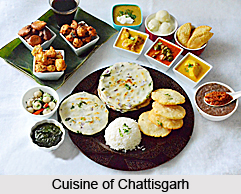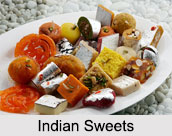 Botanical name: Elettaria cardamomum Mation
Botanical name: Elettaria cardamomum Mation
Family name: Zingiberaceae
Indian names are as follows:
Hindi:Chhoti Elaichi
Bengali:Chhoto Elach
Gujarati:Elaychi
Kannada:Yelakki
Kashmiri:Aa`l Budu aaa`l
Malayalum:Elathari
Marathi:Velchi
Oriya:Aloichi
Sanskrit:Ela
Tamil:Yelakkai
Telugu:Yealak-Kayulu or Elakkayi.
Lesser cardamom, green cardamom, Malabar cardamom or `Chota Elaichi`, is the `true cardamom of commerce` and is popularly known as the `Queen of Spices`. It is one of the valued spices of the world. Among the spices of India too, it occupies an eminent position as the second largest foreign exchange earner. It is next only to black pepper only in this regard. India meets about 60 to 65 % of the world`s demand through the export of 1,400 to 2,300 tons of cardamom to about 50 countries.
Indian cardamom tops in quality with its characteristic flavor or aroma. Since centuries it has been preferred choice worldwide. However, it does not compare well with Guatemala cardamom in only color and external appearance. Because of its attractive parrot green color, Guatemala cardamom is emerging as a potential rival in the Middle East and elsewhere.
Cardamoms are the dried fruits (capsules) of a medium-sized herbaceous perennial, 2 to 5 meters tall and native of Western Ghats in South West India. Its real stem is underground rhizome, and the aerial shoot is a pseudostem formed by the encircling leaf sheaths. The leaves are long and lanceolate in shape. Flowers are borne on panicles and they merge directly from the underground stem on long floral stalks. The growth habit of the panicles and the shape as well as the size of the capsules varies in different cultivated varieties of cardamom. The floral stalks emerge in January and flowers appear in April. Flowering, of course, continues up to July- August. Fruits start maturing in August-September, and continue further up to December-January. Fruits are trilocular capsules containing about 10 to 15 seeds in each capsule.
 Harvesting is generally done once a month, great care being taken to pick only those fruits, which are just nearing ripeness, that is, not fully ripe. Fully ripe fruits tend to split on drying and do not develop the desirable rich dark green color. The harvested fruits are dried in different ways.
Harvesting is generally done once a month, great care being taken to pick only those fruits, which are just nearing ripeness, that is, not fully ripe. Fully ripe fruits tend to split on drying and do not develop the desirable rich dark green color. The harvested fruits are dried in different ways.
In large plantations, drying or curing is done in a drying house in which the fruits are heated by a system of pipes through which hot air from a furnace is passed.
In the smallholdings of Coorg and other areas, they are dried on open platforms heated from below and sheltered by a roof open on all sides. Drying is also done on a beaten ground or on a mat in the sun.
KILN DRYING:
The heat is generated by an external furnace and conducted through the chamber by means of flues. A hot air chamber may be a building with walls of bricks or stones or even wooden planks and with a tiled roof. A ceiling may be of definite advantage. Inside the chamber are racks for trays. The trays consist of ordinary reeper frames with wire mesh or hessian bottoms. The racks are arranged in tiers 20 to 22.5 cm apart to permit easy manipulation of trays.
A hot-air chamber with inside dimensions of 4.5*4.5 meters and a ceiling at a height of about 2.5 meters is sufficient for a crop of 1,800 to 2,000 kg. Of dry cardamom per annum. Attached to the room is the furnace which is fed from outside. From the furnace, hot air is carried along heating flues, which lie a few centimeters above the floor.
Drying should be carefully controlled and should not be too rapid. The harvested cardamoms are placed in trays, which are accommodated in racks. The furnace is then lit. The cardamoms are dried for about 30 hours at a temperature of about 82-degree C. When cured, the cardamoms should be hard and of good greenish color. At no time during the drying process should they be exposed to strong light which bleaches them.
Dried cardamoms require cleaning to remove all stalks and dried remains of floral parts. Rubbing dried cardamoms over a course surface of wire mesh or bamboo trays should do this. This is done best while the stuff is still hot. For this purpose, a further drying for about two hours over a charcoal fire or in the hot-air chamber is needed. Thereafter the fruit capsules are sorted and graded suitably.
BLEACHING:
There is some demand overseas for bleached cardamoms, though mainly it is sold with its natural attractive green color. In fact, it is those cardamom capsules which lack the uniform green color and fetch a low price in the market, that are put through a bleaching process in order to attain uniform color and appearance. Bleaching agents like bleaching powder, sulfur-di-oxide, or hydrogen peroxide are generally used for this purpose.
 In spite of bleaching being costly and time consuming process, no material benefit is reported to be derived out of it except an improvement in outer appearance of the pericarp which is often thrown away and a slight improvement in the keeping quality of cardamoms. On the other hand, it reduces the percentage of volatile oil in the seeds and imparts a sulfurous odor to the produce.
In spite of bleaching being costly and time consuming process, no material benefit is reported to be derived out of it except an improvement in outer appearance of the pericarp which is often thrown away and a slight improvement in the keeping quality of cardamoms. On the other hand, it reduces the percentage of volatile oil in the seeds and imparts a sulfurous odor to the produce.
On the markets, cardamoms of different colors, sizes and shapes are available. Their color ranges from attractive green to brown. Green color indicates its freshness. The real quality lies in the seeds as the skin is generally thrown away. Most of the aroma that is due to essential oil and other volatile compounds resides in the seeds.
The Government of India through Bureau of Indian Standards (BIS), and `Agmarking` authorities have prescribed fairly well defined grades, popularly known as `Agmark` and ISI grades respectively, an Indian specification or standard on the basis of important quality factors like color, weight per unit volume, size and percentage of empties, malformed, shriveled and immature capsules. In all 33 separate specifications have been laid for different qualities or types of cardamoms.
The composition of cardamom varies slightly with the variety, region and age of the product. The following data cover the range of variations in Indian cardamom (seeds):
Moisture:7 to 10 % (av. 8.3)
Volatile oil:5.5 to 10.5 % (av.8.3)
Total ash:3.8 to 6.9 % (av. 5.0)
Alkalinity of ash:0.4 to 2.4 % (av. 1.1)
Water soluble ash:0.4 to 2.4 % (av. 2.7)
Acid soluble ash:0.4 to 1.9 % (av.1.1)
Non-volatile ether extract:2.0 to 4.5 % (av.2.9)
Crude fiber:6.7 to 12.8 % (av. 9.2)
Crude protein:7.0 to 14.0 % (av. 10.3)
Starch (by acid hydrolysis): 39.0 to 49.9 (av. 45.4)
Calcium:0.3 %
Phosphorus:0.21 %
Sodium:0.01 %
Potassium:1.2 %
Iron:0.012 %
Vitamin B1 (thiamine):0.18 mg/100g
Vitamin B2 (riboflavin):0.23 mg/100g
Niacin:2.3 mg/100g
Vitamin C (ascorbic acid):12 mg/100g
Vitamin A:175 I.U. per 100g of seeds.
Analysis of cardamom capsules shows the following:
Moisture:20 %
Protein:10.2 %
Ether extract:2.2 %
Volatile oil:7.4 %
Total ash:5.4 %
Crude fiber:20.1 %
Carbohydrates:42.1 %
Calcium:0.13 %
Phosphorus:0.16 %
Iron:5 mg/100g.
A good portion of cardamom produced in India is consumed internally, for chewing or as a masticatory, as a common ingredient of special seasonings and curry powders and flavoring sweetmeats, pastries, cakes, other bakery products, gingerbread, puddings, kheer, meat curries, sausages, and various kinds of foods and culinary preparations. It is also used in sweet pickles.
Its essential oil is used for flavoring certain bitters and liquors and also in the manufacture of perfumes. In Arab countries, social and religious functions are never complete without serving `gahwa` - a special cardamom flavored coffee. Powdered seeds of cardamom boiled with tea water imparts a very pleasant aroma to the tea, and the same can be used as medicine for scanty urination, diarrhea, dysentery, palpitation of the heart, exhaustion due to over work, depression etc.
The spice has a lot of medicinal virtues. Tinctures of are made, used chiefly in medicines for windiness or stomachic. There are a number of medicinal preparations are made out of this herb, particularly digestive medicines. Infusion of cardamom is gargled to cure pharyngitis and sore throat. By consuming it regularly it improves eyesight. There are many such effective applications.




















